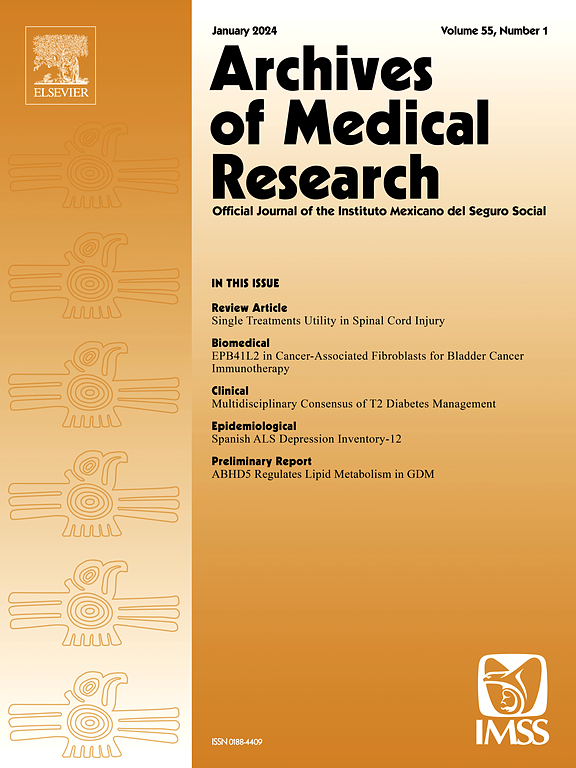轻度COVID-19恢复个体的生化特征:两个不同时间点的横断面观察
IF 3.4
3区 医学
Q1 MEDICINE, RESEARCH & EXPERIMENTAL
引用次数: 0
摘要
目的本研究旨在横断面评估轻度COVID-19急性感染6-15个月后存活患者长型COVID-19的频率及其血液学和生化指标。方法我们招募了75名年龄匹配的健康对照(HC)和150名COVID-19轻症康复者。根据急性感染后的恢复时间进行分组:6-10个月(CoV_A)和10-15个月(CoV_B)。简短的临床病史和详细的血液学和生化血液参数测量。结果在我们的研究中,64%的个体有长冠状病毒的症状。有不同的症状和表现主诉与时间有关,因为急性感染。恢复组血红蛋白浓度、红细胞(RBC)计数、白细胞(WBC)计数、淋巴细胞、白细胞介素-6 (IL-6)、谷丙转氨酶(ALT)、碱性磷酸酶(ALP)和维生素D3水平与健康对照组比较差异均有统计学意义(p < 0.05)。6-10个月和10-15个月恢复组之间也存在差异(p < 0.05)。结论与急性感染时间相关的差异性生化指标反映了感染后不同时间点宿主代谢生化状态的不同。此外,还应研究与COVID-19感染的长期影响相关的这些失调的生化标志物所涉及的病理生理途径。本文章由计算机程序翻译,如有差异,请以英文原文为准。
Biochemical Profile of Recovered Individuals With Mild COVID-19: A Cross-Sectional View at Two Different Time Points
Aim
This study was designed to cross–sectionally evaluate the frequency of long COVID-19, along with their hematological and biochemical parameters in survivors of mild COVID-19 after 6–15 months of acute infection.
Methods
We recruited 75 age-matched healthy controls (HC) and 150 individuals who had recovered from mild cases of COVID-19. The recovered individuals were grouped according to the time elapsed since acute infection: 6–10 month (CoV_A) and >10–15 month of recovery (CoV_B). A brief clinical history was taken and detailed hematological and biochemical blood parameters were measured.
Results
In our study, 64% of individuals had symptoms of long COVID. There were differential symptoms and presenting complaints associated with time since acute infection. The recovered group had significantly different hemoglobin concentration, red blood cell (RBC) count, white blood cell (WBC) count, lymphocyte, interleukin-6 (IL-6), alanine aminotransferase (ALT), alkaline phosphatase (ALP) and vitamin D3 levels, compared with the healthy controls (p<0.05). Differences were also found between the 6-10 months and the >10–15 month recovery groups (p<0.05).
Conclusion
Differential biochemical markers related to the time elapsed since acute infection show a different metabolic and biochemical status of the host at different time points after infection. Moreover, the pathophysiological pathways involved in these dysregulated biochemical markers should also be studied in relation to the long term impact of COVID-19 infection.
求助全文
通过发布文献求助,成功后即可免费获取论文全文。
去求助
来源期刊

Archives of Medical Research
医学-医学:研究与实验
CiteScore
12.50
自引率
0.00%
发文量
84
审稿时长
28 days
期刊介绍:
Archives of Medical Research serves as a platform for publishing original peer-reviewed medical research, aiming to bridge gaps created by medical specialization. The journal covers three main categories - biomedical, clinical, and epidemiological contributions, along with review articles and preliminary communications. With an international scope, it presents the study of diseases from diverse perspectives, offering the medical community original investigations ranging from molecular biology to clinical epidemiology in a single publication.
 求助内容:
求助内容: 应助结果提醒方式:
应助结果提醒方式:


